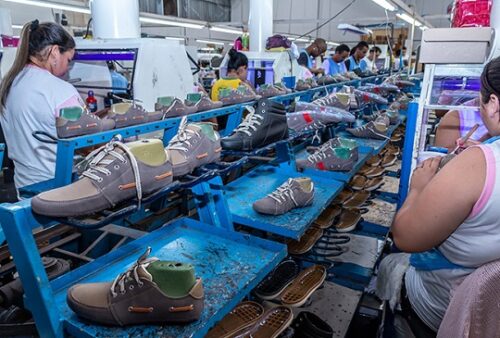26 Jul 2022
Ian Banks, Editor of TheSauerReport, examines the situation in South America post-pandemic, and how some of the supply chain priorities and business relationships may have shifted.
Across most of the larger beef-producing regions of South America, slaughter numbers remain steady, with perhaps just a small year-on-year increase in some regions. However, even though the slaughter rates have remained broadly similar, the amount of beef exported out of South America has increased with Asia being the primary destination. We have seen how much growth there has been for U.S. beef packers over the past two years.

Argentina did impose some export restrictions upon beef exports earlier this year to try and dampen the rising costs for domestic consumption but if anything, this had the opposite effect and so the ruling was reversed. Sales to European origins were on the rise until recently but beef, like hides, is sold in US$ and the falling euro has in many cases put a halt to this. It remains to be seen what impact Australian beef exports will have on the world market when they come back into play following a period of restocking, this is forecast towards the end of this year or early 2023.
Green hide prices generally have remained steady over the past month following a period where price corrections were dominating proceedings. The volume of hides and semi-processed material (wet-blue) that is being exported has not risen as expected, instead the rise in manufacturing across South America has grown, with Brazil recording some very strong volumes of goods produced. It is the domestic footwear industry that is leading the way.
Ever since the outbreak of the pandemic in China over 30 months ago, a number of manufacturers and brands/retailers of finished products had starting to look for alternative locations for their sourcing. At first, it was suspected that much of the work would return to China, but this has not always been the case, following the initial pandemic lockdowns we have witnessed freight prices skyrocket and container availability decrease. Also, earlier this year almost three months of production was lost in China – first, there was the New Year break followed by entire cities being forced back into lockdown. For many shoe manufacturers supplying brands or their own retail network, this was the final straw.
Now, with more manufacturing taking place in South America, as the raw materials are close to the tanneries and the meat processors. Many of the goods produced are destined for North America and Europe, so the export markets are also geographically closer. Clearly the pandemic has created a shift in supply chain sourcing which may well be benefitting tanners and finished product makers across Latin America which may become a more permanent arrangement moving forward.
We bring leather, material and fashion businesses together: an opportunity to meet and greet face to face. We bring them from all parts of the world so that they can find fresh partners, discover new customers or suppliers and keep ahead of industry developments.
We organise a number of trade exhibitions which focus on fashion and lifestyle: sectors that are constantly in flux, so visitors and exhibitors alike need to be constantly aware both of the changes around them and those forecast for coming seasons.